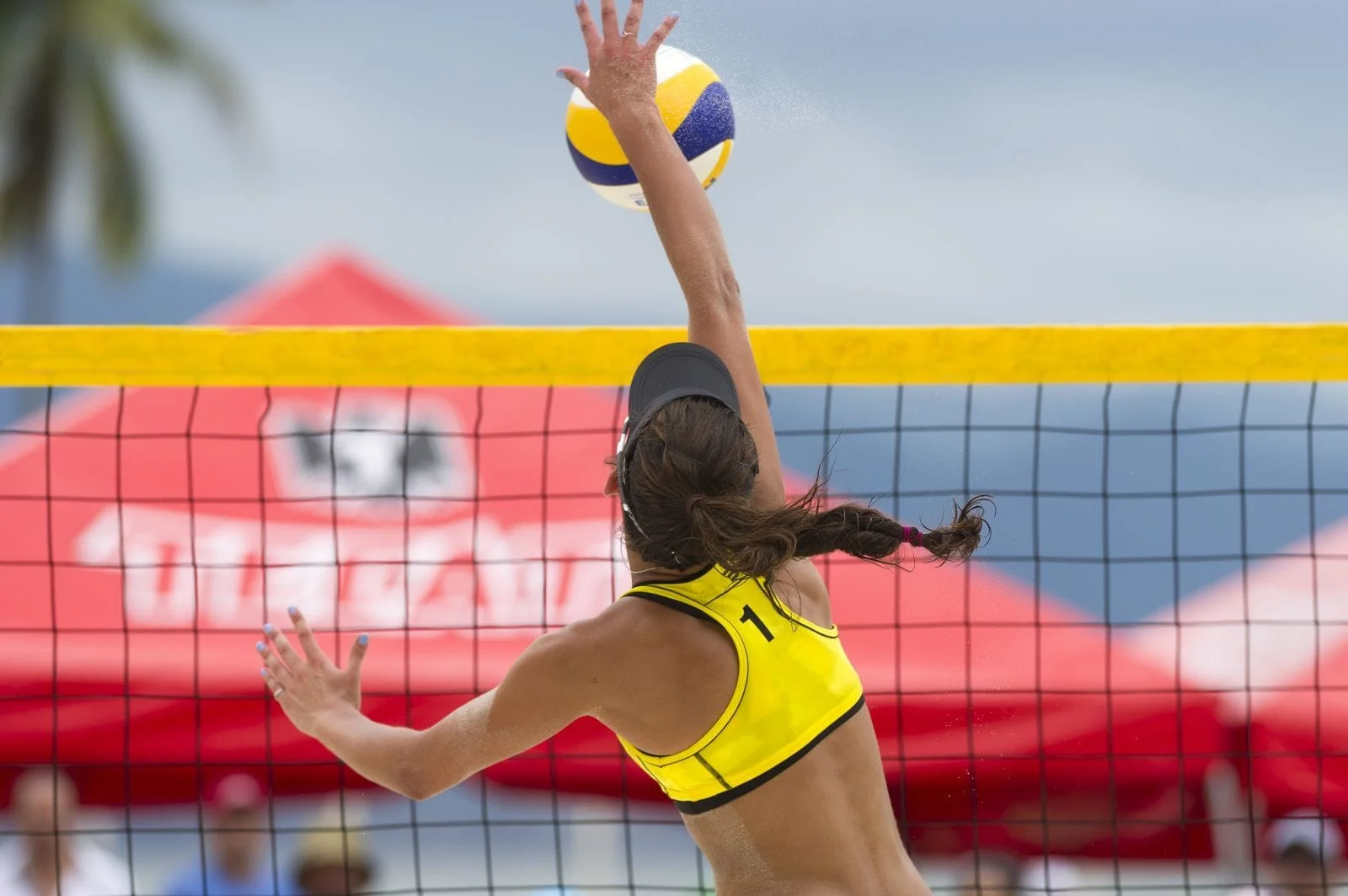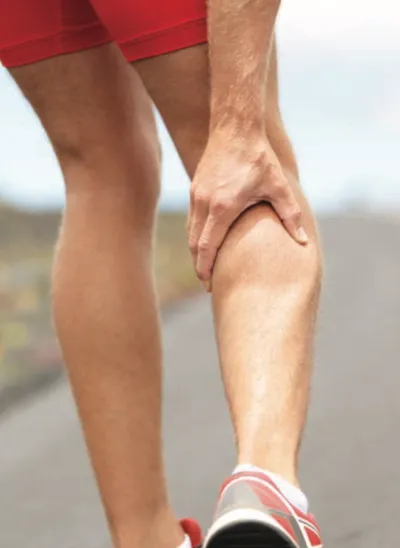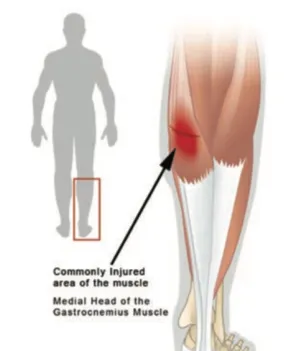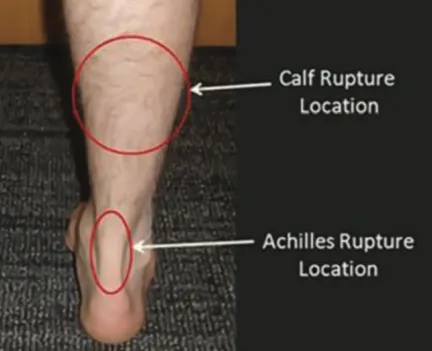
Gastrocnemius – The gastrocnemius makes up a large portion of the calf muscle. The muscle below it called the soleus completes the large muscle belly in the back of the lower leg. The muscle connects the upper leg bone just behind the knee to the Achilles tendon and then to the heel bone at the bottom of the foot.
CAUSES:
- Overstretching the muscle beyond its elastic limits.
- Foot is moved up excessively when the knee locks during an activity.
- Usually associated with poor calf flexibility.
- Age causes loss of elasticity of muscle fibers.
- More common in men and women over the age of 35.
- Occurs after the muscle has warmed up and then cooled down for a short period of time. When the muscle is utilized actively again following the cool down phase tears are more common. (Example, second half of a flag football game, second or third set in a tennis match after resting between sets, second half of a basketball game after prolonged sitting during halftime.
SIGNS & SYMPTOMS:
- Immediate feeling of a pop in the calf muscle.
- May be confused with an Achilles tendon rupture.
- Immediate inability to weightbear on the foot.
- Immediate pain and swelling.
- Swelling and discoloration extend down to the ankle and heel area over a period of days.
- Difficulty weightbearing is usually present for at least 10-14 days.
- Underlying fracture of the bone must be ruled out.
TREATMENT:
- A thorough lower extremity history and physical examination.
- Identify the extent of injury (partial versus complete tear).
- Ice to minimize the bleeding and swelling in the area, 20 minutes on, 40 minutes off as often as possible for the first 2-3 days. Never put ice directly on the skin. Put on a sock.
- Anti-inflammatory medication may benefit in reducing the amount of inflammation.
- Cam walker (boot) to lessen stress on the muscle • Heel lifts to decrease muscle tension
- Compression with an ace bandage or a leg sleeve.
- Utilization of crutches for 7-10 days if weight bearing is difficult.
- Physical therapy is usually done after the first few days. Ultrasound, electrical stimulation may help to diminish the amount of swelling and limit the muscle damage. Range of motion exercises for the first few days followed by a guarded strengthening program. Over a period of time strengthening consists of both concentric (muscle shortening) and eccentric (muscle lengthening) exercises to promote full strength.
- Slow return to sneakers or shoes with a heel lift after 2-3 weeks.
- Return to sports in most cases in 6 weeks. Too early of a return risks reinjury.
PROGNOSIS:
Prognosis for these injuries is excellent. They never need to be corrected surgically, even in a collegiate or professional athlete. Once the muscle tears, scar tissue usually develops in the muscle torn region causing some thickening to the area. Recovery of muscle strength is usually present if the muscle has been mobilized shortly after the injury. A slight deformity also develops in the calf muscle when comparing it to the unaffected side. Full return to all sports is expected.




